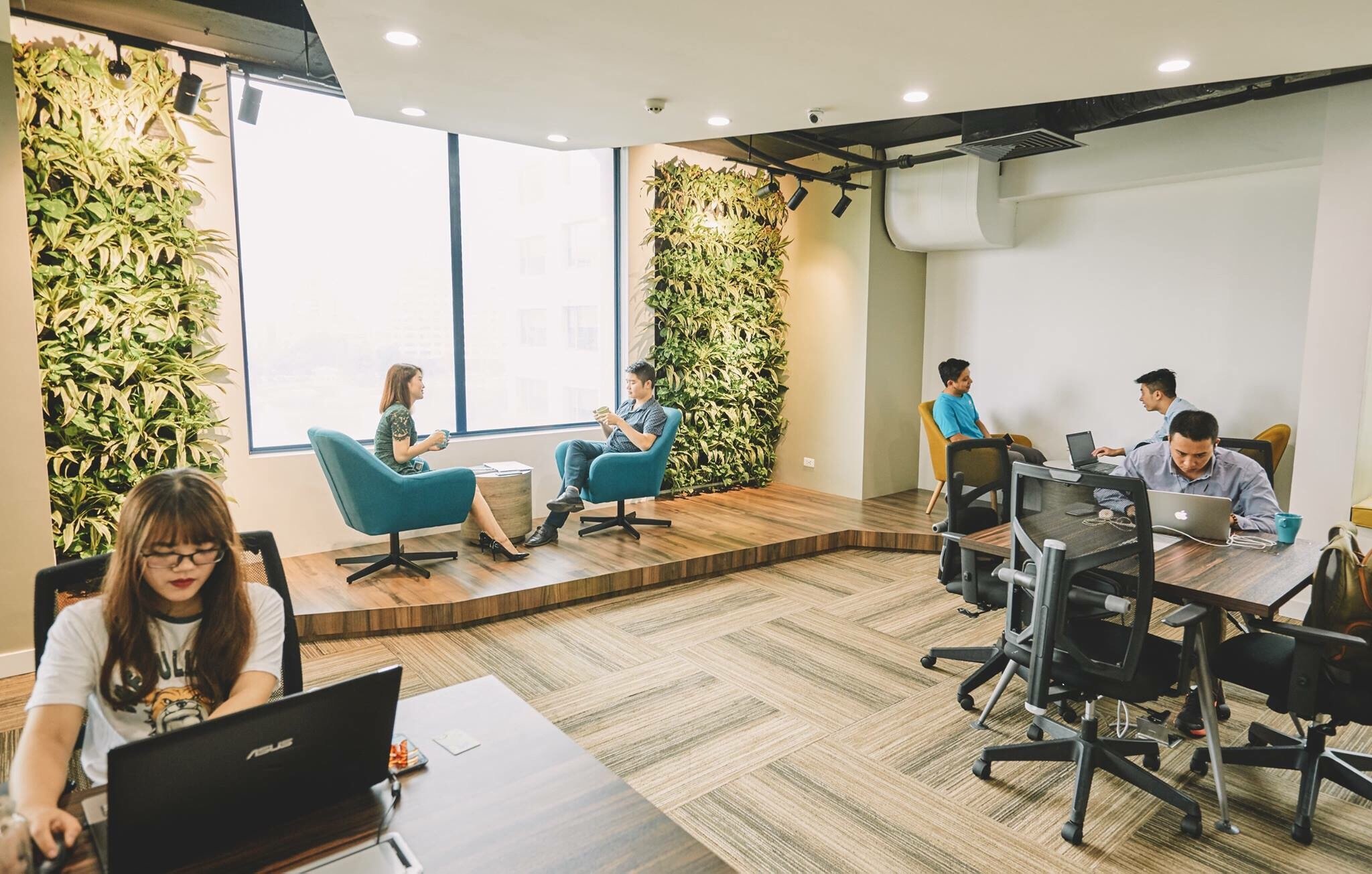A healthy work environment has been shown to improve retention and productivity in several employment sectors. Developing and nurturing a culture where employees stay and are productive is crucial to working in a positive, healthy team. There are physical elements to creating an environment that supports the recruitment and retention of workers, but there are also cultural factors that play a major part in a healthy workplace. Here are some best practices for creating healthy work environments that will attract, recruit, and retain top talent.
Conducting Engagement Surveys and other Research
Engagement and pulse surveys will inform areas of the workplace culture that are less than positive and require development. It gives a baseline of the current working environment and how people feel about teamwork, openness, and other elements that need attention. A survey or other audits may reveal issues that have not been considered in an improvement plan but are critical for the healthy workplace such as bullying, stressful environments, and more. Even issues such as a lack of vision can impact workers and their sense of belonging to a company. Working on organizational culture by collecting relevant data from workers is vital, as it creates the foundation of a healthy work environment.
Work on Leadership and Team Building
From a psychological perspective, one of the important factors of a healthy working environment is strong leadership. An analysis of recruitment in businesses has shown that employees are more attracted to departments with a good team and leadership working spirit, which produces positive productivity. Strong communication skills is another element of creating a healthy work environment which contributes to positive recruitment and retention. In these environments, colleagues treat each other with respect and trust. Engaging all employees in the basics of leadership skills with more advanced programs for senior workers instills positive working practices and helps retain talented workers.
Empowering people to do things is critical in building a healthy working environment. It fosters development and encourages people to learn through safe failure. By having defined roles in an organization and lines of accountability, empowered team members will grow in confidence and development. This leads to positive recruitment and retention. It is also vital that employers appreciate the efforts of workers and thank them for what they do. This leads to a sense of belonging and value in the workplace.

Focus on Trust
Studies have shown that most workers in companies surveyed value openness and honesty as a key element of a healthy working environment. This builds trust and avoids unhealthy working relationships, rumors, and a negative culture. They also valued engagement and empowerment in the workplace. Organizations can create this environment by encouraging questions, constructive challenges, and honesty. Making firm commitments and standing by them strengthens trust in an organization. Shared values and behaviors enforce an open culture, as does calling out unacceptable behavior. This creates a trustworthy, open culture to work in, in allowing employees to feel safe. A consequence of these changes is a healthy working environment.
Introduce Flexible Working
Presenteeism in the workplace is seen as harmful to working practice and can lead to a lack of productivity. Introducing flexible working is a positive way to change culture around work environments and give employees options around the way they operate in the workplace. Flexible working has been shown to increase recruitment and retention of employees and also contribute to a reduction in stress. Cisco surveyed its employees after implementing a flexible working program using technology, and found that 67% of employees improved productivity. 83% of those employees reported their communication with colleagues was the same or better following the implementation of flexible working. This way of working also leads to a reduction in sickness and absence. Flexible working is becoming the norm for younger employees and can also save a business money through reduced office space and turnover cost reduction.
Promote Healthy Habits
Promoting health in the workplace is a vital part of creating a healthy working environment. Simple things like encouraging people to take a break makes a difference. Sedentary behavior is now believed to be a major factor in cardiovascular and cancer risk, so getting employees to move more is a positive development. Some of these activities mean a simple change but can make a big difference to health. Try walking meetings in place of sitting in an office. Getting people to walk around the block at lunchtime is another example. Standing desks, and encouraging people to walk or cycle to work help keep employees moving more. One of the other benefits of flexible working is that employees can fit in a session at the gym before work or during the day.
Managing stress is crucial to creating a healthy working environment. All employees need to be stress-aware so they recognize signs, both in themselves and in others, when things get overwhelming. This should include strategies on how to manage stress and ways of reducing stressful situations. Some workplaces have mindfulness classes or yoga to support people in managing stress. Another helpful intervention to help people switch off from the workplace is a "Going Home Checklist." These are designed to facilitate reflection and mindfulness after a day at work, so the employee can focus on their family and home. This encourages healthy behavior, reduces the problems around having to be present the whole time, and will contribute to employee retention. Having some house rules on after-hours emails is another way of helping workers reduce stress and focus on home life. In France, a law has been passed for companies with more than 50 employees, requiring them to disconnect from emails after working hours, which aims to prevent burnout.
Having a smoke-free workplace reduces the risk of passive smoking. It also provides a catalyst for prospective employees to consider giving up the habit. If there is a cafe in the workplace, ensuring it is stocked with healthy nutritious fresh salads and dishes, instead of processed, sugary food, promotes healthier eating habits. Water coolers are ideal for preventing dehydration in office environments.
Bringing Health Benefits to Employees
Workplaces with health benefit programs are attractive to employees. Gym memberships, discounts on sports gear and bicycles, and even free exercise classes are just a few examples of benefits that contribute to healthy employees and are attractive to talented workers. Other employers offer time for health screening, comprehensive eye exams, and flu vaccinations. Employees working for long stretches on computers should have an annual eye exam, so bringing comprehensive eye exams to the workplace is a simple step an employer can make to create a healthy working environment. A mobile eye clinic like 2020 On-site also gives employees time to prioritize their health by having the opportunity for an exam readily available.
Ensuring people have the correct equipment to function well in the workplace and have assessed their work station to ensure it minimizes the risk to repetitive strain injury or back pain is vital. All of these things contribute to promoting a healthy working environment. Promoting good posture, providing safety glasses, and raising awareness of health and safety at work is another positive way of avoiding workplace related injuries and having a health focused culture.
Offering regular checks for blood pressure, cholesterol, and blood sugar levels will empower people to know more about their health and will enable risk factors for cardiovascular disease to be managed proactively before they lead to more permanent heart problems. Some organizations run health promotion months, where small changes are introduced to the workforce, such as taking a break, engaging in mindfulness, and more. When workers adopt at least one lifestyle change, it can lead to a positive step in creating healthier working environments and embeds healthy habits.

Implementing Proactive Human Resources or People Operations Departments
A human resources team is integral to facilitating a healthy working environment. Some organizations now also use the term people operations for a similar set of functions. Whether it is developing a policy for flexible working, or making sure everyone has clear objectives and an appraisal, their role is the catalyst for positive change. A proactive team can implement healthy working policies and engage with team members to ensure the new way of working will be feasible. This ensures that any development toward a healthy working environment is sustainable and contributes to recruiting and retaining talented employees. The human resources or people operations team should learn from worker attrition by conducting exit interviews, so that critical issues can be reviewed and changed to support a healthier working environment.
A healthy work environment is dependent on a positive workplace culture and trust, and it includes both the psychological needs of workers, as well as physical fitness. Each company should review their policies and implement a healthy working environment as the lynchpin to a positive culture, as this is increasingly what talented employees consider when researching great places to work.




